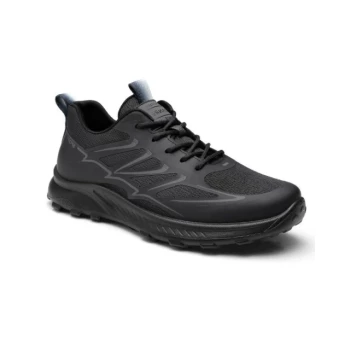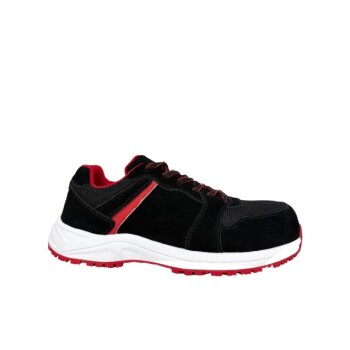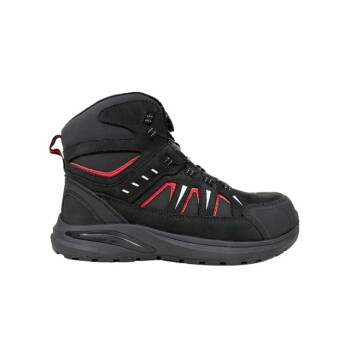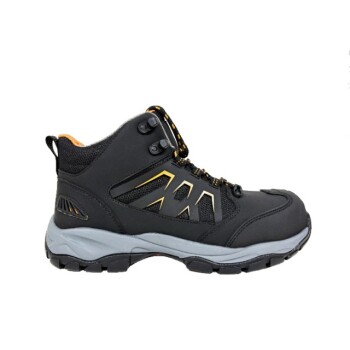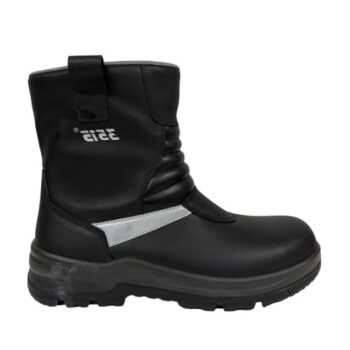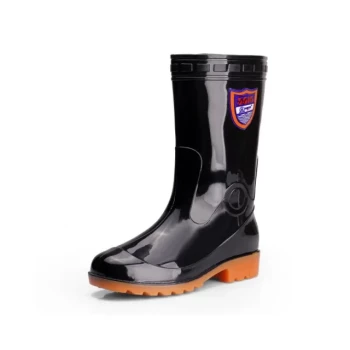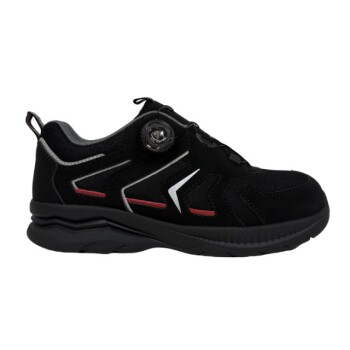In short, composite toe caps offer significant advantages in weight and environmental resistance. They are lighter than traditional steel toes, do not conduct electricity or temperature, and will not trigger metal detectors. However, these benefits come with trade-offs, primarily in cost, availability, and a potentially bulkier profile in the boot.
The decision to choose a composite toe boot is driven by your specific work environment. If you prioritize lightweight comfort for long shifts, work in extreme temperatures, or require non-conductive footwear for electrical safety, composite is a superior choice.
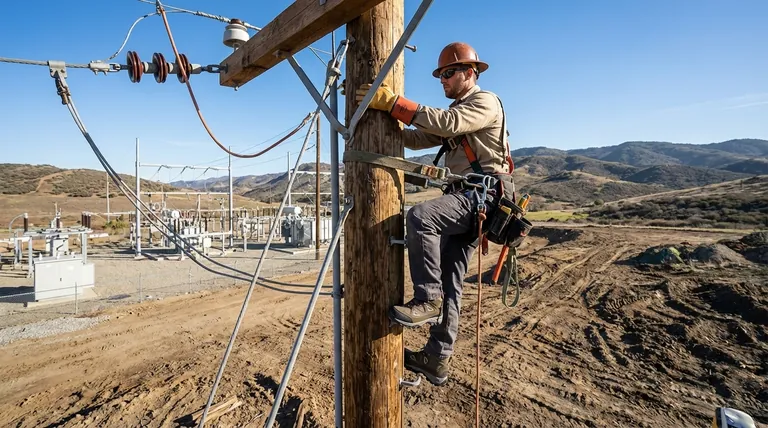
The Core Advantages of Composite Materials
Composite safety toes are engineered from non-metallic materials like Kevlar, carbon fiber, plastic, and fiberglass. This construction gives them distinct properties that are highly beneficial in certain professional contexts.
Significant Weight Reduction
A composite toe cap is approximately 30% lighter than a comparable steel one. This weight difference dramatically reduces foot fatigue over a long workday, making them a preferred choice for individuals who are constantly on their feet.
Superior Thermal Insulation
Unlike metal, composite materials do not conduct heat or cold. This makes them exceptionally well-suited for working in extreme weather conditions, keeping your feet more comfortable in both freezing and high-heat environments.
Electrical Hazard Protection
The non-metallic nature of composite toes means they do not conduct electricity. This is a critical safety feature for electricians, utility workers, and anyone working in environments with a risk of live electrical circuits.
Convenience at Checkpoints
Because they contain no metal, composite toe boots will not set off metal detectors. This is a significant convenience for workers who must regularly pass through security checkpoints.
Understanding the Trade-offs and Limitations
While the advantages are clear, it is crucial to understand the potential downsides to make a fully informed decision. No single material is perfect for every application.
The Question of Impact Resistance
Composite toes meet the same impact and compression safety standards as steel toes. However, some sources suggest they may not provide as much protection in extreme, beyond-standard impact situations. The material is more likely to crack under a catastrophic load, whereas steel may bend.
Profile and Bulk
To achieve the required safety rating, composite toe caps can sometimes be thicker and more bulbous than their steel counterparts. This can result in a bulkier-looking boot, though modern advancements like nano-composites are creating thinner, lighter options with more toe room.
Cost and Availability
Composite toe footwear is often found in higher-specification boots and is typically more expensive than steel-toed alternatives. You may also find a narrower variety of styles and sizes available compared to the ubiquitous steel toe.
Making the Right Choice for Your Role
To select the best safety toe, align the material's properties with the primary demands and hazards of your job.
- If your primary focus is all-day comfort and reduced fatigue: Choose composite for its significant weight savings.
- If your primary focus is electrical safety: Composite is the essential choice as it does not conduct electricity.
- If your primary focus is working in extreme heat or cold: Composite provides crucial thermal insulation that steel cannot offer.
- If your primary focus is passing through metal detectors frequently: Composite will save you considerable time and hassle.
Ultimately, understanding these key differences empowers you to choose safety footwear that serves as a tool, not a burden.
Summary Table:
| Aspect | Pros of Composite Toe | Cons of Composite Toe |
|---|---|---|
| Weight | ~30% lighter than steel, reduces fatigue | - |
| Thermal Conductivity | Non-conductive, ideal for extreme temperatures | - |
| Electrical Safety | Does not conduct electricity | - |
| Metal Detectors | Will not trigger alarms | - |
| Cost & Availability | - | Often more expensive and less variety |
| Profile | - | Can be bulkier than steel toes |
| Extreme Impact | Meets safety standards | May crack under catastrophic loads (vs. steel bending) |
Need Durable, High-Performance Safety Footwear?
As a large-scale manufacturer, 3515 produces a comprehensive range of safety boots for distributors, brand owners, and bulk clients. Our production capabilities encompass all types of composite and steel toe footwear, ensuring you get the right protection and comfort for your specific work environment.
Let us help you equip your team with the best. Contact us today to discuss your custom or bulk footwear needs!
Visual Guide
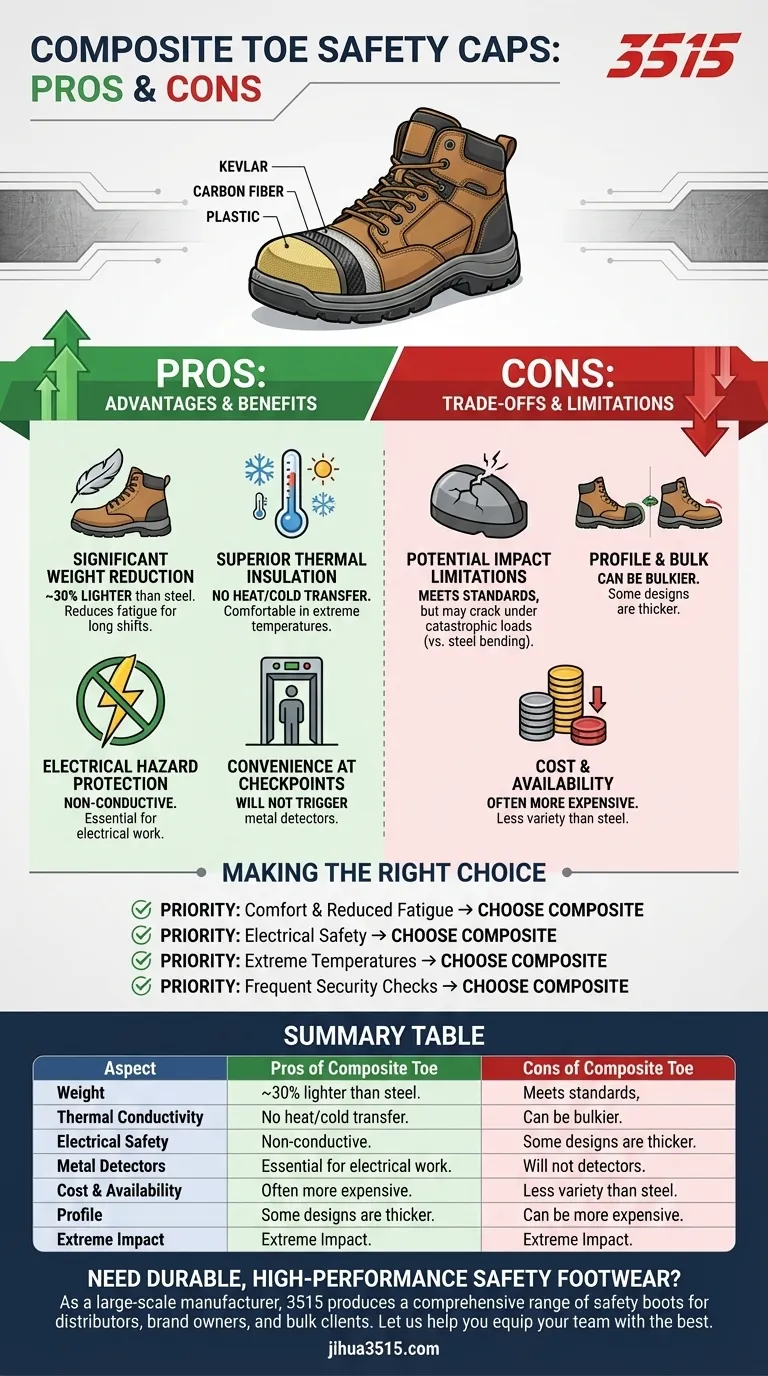
Related Products
- Safety Footwear Wholesale Manufacturer for Custom OEM/ODM Production
- Custom OEM Training Shoes Wholesale Manufacturer Durable & Breathable
- Durable Moc-Toe Wedge Work Boots | Wholesale Manufacturing for Brands
- Wholesale Safety Footwear Manufacturer for Bulk & Custom OEM Orders
- Premium Suede Sport Safety Shoes for Wholesale & Bulk Orders
People Also Ask
- What do heavy duty boots do? Protect Your Feet in Demanding Work Environments
- Do snake bite boots work? Your Ultimate Guide to Effective Snake Bite Protection
- How long can you wear safety boots? The Lifespan is Determined by Wear, Not Time
- What cultural and environmental considerations are tied to wearing shoes indoors? Balance Hygiene, Tradition, and Foot Health
- How do safety shoes contribute to cost savings for companies? A Strategic Investment in Risk and Cost Management

